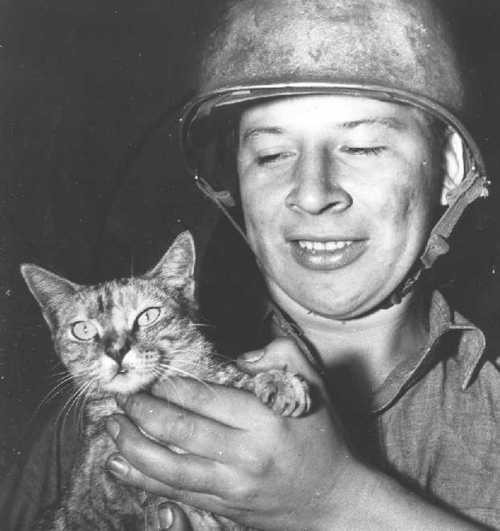Hello there my furry friends,
I found this great article written by Mikkel Becker of Vetstreet.com and thought I would share it. Enjoy!
Cats are the most popular pet in the United States; they are
intelligent, affectionate and mysterious creatures. Despite this
popularity — and perhaps because of their air of mystery — there are
many misconceptions about cats that cause both social and physical
problems for these animals.
Here are 10 common-but-false assumptions about felines — and the truth behind them.
1. Cats are solitary animals and like to be home alone.
False. Separation can be stressful for cats. Specifically,
separation anxiety
may manifest in behaviors such as urination and defecation outside of
the litterbox, vocalization, vomiting, excessive grooming, lack of
appetite, anxiety at departure or an exuberant greeting when you
return. To keep your cat happy, it is essential to limit their time
alone and provide them with stimulation and interaction in the form of
play, petting, food toys and perches. If you have an extremely stressed
cat, it’s essential to make an appointment with your veterinarian to
further address the problem.
2. Cat litterbox issues are always a behavior problem and can‘t be fixed.
False. Failing to use the litterbox may be linked to
a medical issue or may be caused by stress or anxiety, so start with a
visit to your veterinarian. Once you identify the cause, there are
various methods for
retraining your cat to go inside the box,
including the use of feline pheromones, changing the type of litter
and box used, increasing the number of litterboxes and strategizing the
placement of boxes around your home.
3. Cats scratch because they are mean.
False. Cats may claw human skin for various
reasons. Sometimes cats claw to express irritation — for example, if
they are not being held or petted in the proper way. Some cats scratch
in play; if this happens, freeze in place and redirect your cat to a
toy. An underlying medical issue, such as arthritis, may also be the
culprit, causing your cat to feel uncomfortable and making him more
likely to lash out. If this is a recurring issue, a visit to your
veterinarian is a must.
4. Cats will suck the life out of a newborn baby.
False. The belief that a cat will suck the air out
of a baby’s lungs is an urban legend; there has never been one medically
proven incident of this happening. In truth, cats and babies can grow
deep bonds and get along well if their interactions are always
supervised by adults and behavior concerns are addressed early on.
5. Cats never need special playtime — they entertain themselves.
False. Cats thrive when they are given daily activities.
Sharing playtime
with your cat for a few minutes several times a day will cut down on
nuisance behavior such as your cat waking you up early in the morning.
Many cats even enjoy going out on walks and can be taught to walk on a
leash.
6. Cats never get along with other cats.
False. Cats often enjoy the company of other cats.
If you’re adopting a kitten, you’ll fare best adopting multiples from
the same litter, which increases their chances of bonding and enjoying
each other’s company. Depending on the cat, it may also be possible to
bring another adult feline into your home.
7. Cats who claw furniture have behavior issues.
False. Cats love to scratch because it sharpens
their claws, relieves anxiety, is an energy releaser and is a way to
mark territory. It’s unfair to expect your cat not to scratch, because
scratching is a perfectly normal behavior that is essential for your
cat’s mental health. You can, however, redirect his clawing to
appropriate areas by providing
scratching posts in strategic areas of your house.
8. Cats always freak out at the vet‘s office, and there is nothing you can do.
False. Cats need regular veterinary care, but
unfortunately, a large percentage of cats do not see the veterinarian as
often as they should, primarily because owners believe such visits are
stressful for their cats. But regular veterinary visits are crucial
because they help to spot medical conditions in your cat even when he’s
not displaying any discomfort that you can see. Hospitals across the
country are more commonly using “stress-free visit” protocols, including
gentle handling, cat-specific waiting rooms and fun treats and toys,
to decrease feline anxiety. If your cat has trouble with clinic visits,
consult your veterinarian for tips on how you can help make the
experience less stressful.
9. Kittens and cats raise themselves and don‘t need training.
False. Cats have a socialization period during the
first weeks of life, falling between 2 and 7 weeks of age, where they
learn about their environment and what is “safe” and “unsafe.” This is
the key time to help your cat adapt to his environment and build bonds
with others. There are even kitten socialization classes that can help
your young cat build confidence and increase his sociability.
10. Cat meows don‘t mean anything and can be ignored.
False. Admittedly, excessive meowing can be a little
annoying at times. But your cat is meowing at you because it’s his form
of communication. Cats are often rewarded for meowing; if your cat
meows with enough persistence, he can elicit a response from you —
often in the form of petting or pulling out the can opener. Excessive
meowing, however, can be linked to medical problems, such as dementia,
hyperthyroidism and
high blood pressure, which means extra meowing in your cat should be investigated by your veterinarian rather than just ignored.

 Thank you to all our Veteran's who have served in the U.S. Armed Forces, also known as veterans.
Thank you to all our Veteran's who have served in the U.S. Armed Forces, also known as veterans.

 Thank you to all our Veteran's who have served in the U.S. Armed Forces, also known as veterans.
Thank you to all our Veteran's who have served in the U.S. Armed Forces, also known as veterans.








.jpg)



